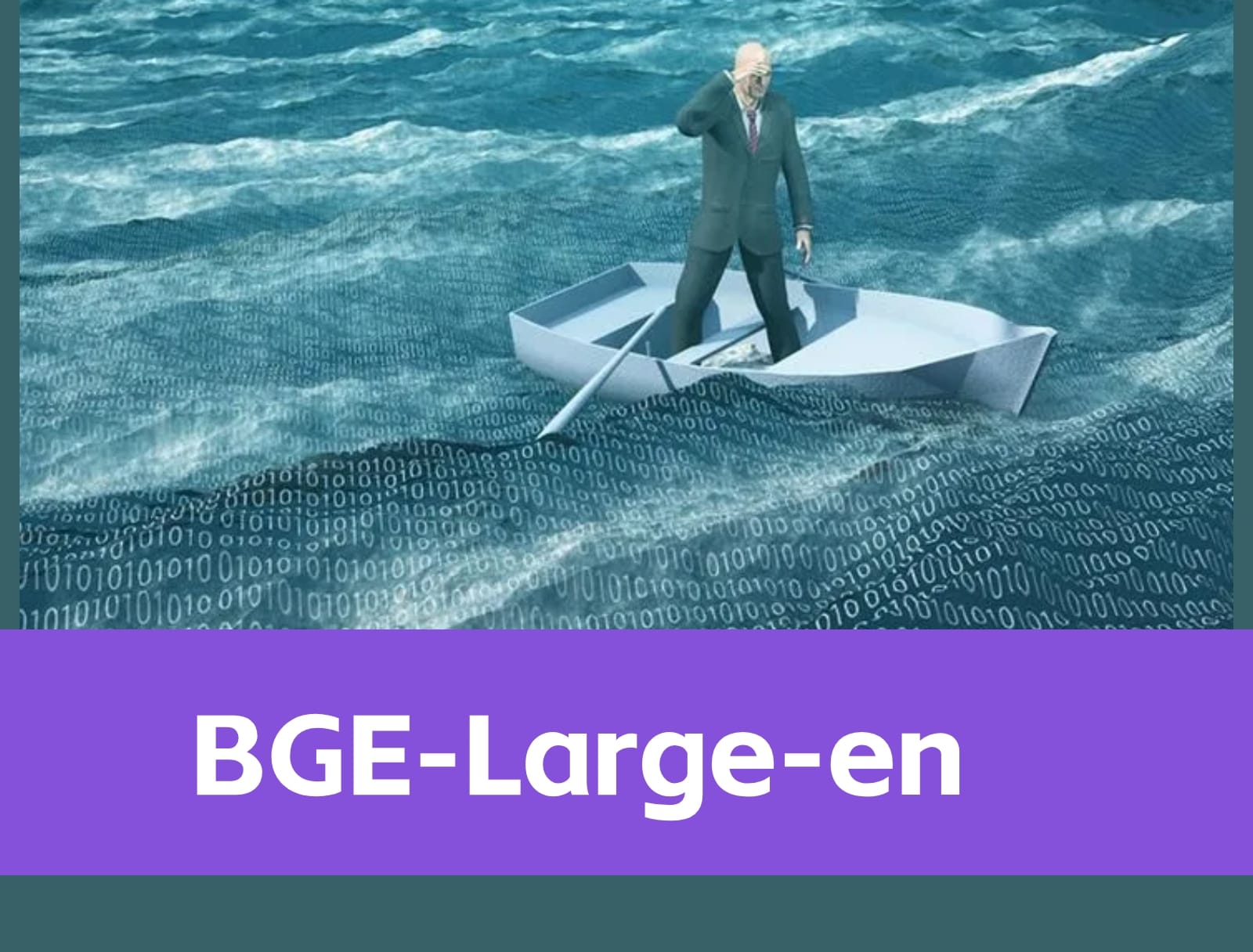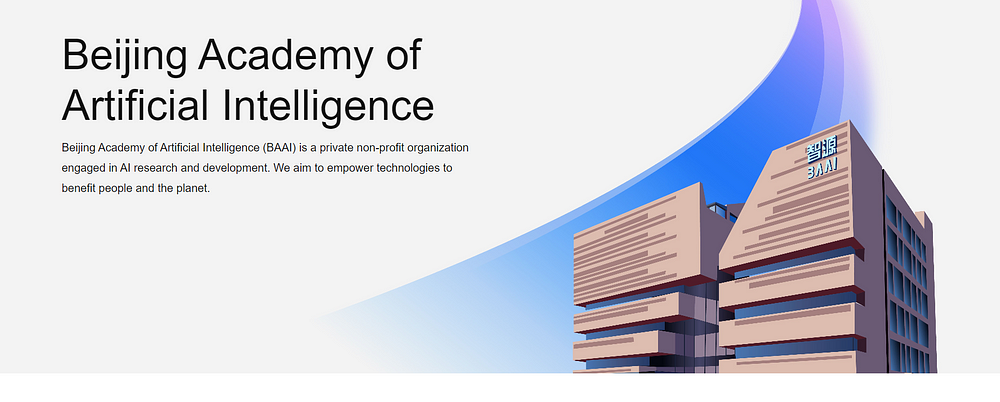Unveiling the Power of BGE Large: The Future of Text Embedding

Key highlights
- Pioneering AI Synergy: Explore the groundbreaking integration of BGE Large and advanced Large Language Models (LLMs), setting new standards in natural language processing.
- Enhanced Text Understanding: Discover how BGE Large’s ability to map text into high-dimensional vectors, combined with the nuanced language generation of LLMs, revolutionizes AI’s understanding of human language.
- Transformative Applications: Learn about the transformative applications emerging from the synergy between BGE Large and LLMs, from sophisticated chatbots to dynamic content creation tools.
- Future of AI Communication: Gain insights into how the integration of BGE Large and LLMs is paving the way for AI that can engage in complex conversations, understand contexts, and provide deep insights.
Introduction to BGE Large
In the rapidly evolving field of artificial intelligence (AI), the development of advanced models like the BGE Large by the Beijing Academy of Artificial Intelligence (BAAI) represents a significant leap forward.

This state-of-the-art text embedding model is setting new benchmarks for understanding and processing natural language, offering unparalleled accuracy and efficiency. In this article, we’ll delve into what makes BGE Large a game-changer in the world of AI and how it’s shaping the future of machine learning, semantic search, and beyond.

BGE Large stands for Beijing General Embedding Large, a sophisticated model developed by BAAI. Designed to map any text into a 1024-dimension embedding vector, BGE Large is at the forefront of text analysis and interpretation. These high-dimensional vectors capture the essence of textual information, enabling machines to understand, categorize, and process language with human-like accuracy.
The Importance of Text Embeddings
Text embeddings transform words, phrases, or longer documents into vectors of numbers, making it easier for computers to process and analyze language. The applications of this technology are vast, including enhancing search engine capabilities, improving recommendation systems, and advancing natural language processing tasks such as translation and sentiment analysis.

Vector embeddings are a key innovation in machine learning, playing a crucial role in numerous natural language processing (NLP), recommendation systems, and search algorithms. Whether it’s navigating through recommendation systems, interacting with voice assistants, or translating languages, you’re engaging with technologies underpinned by embeddings.
In the realm of machine learning, algorithms require numerical data to function. While some datasets come pre-equipped with numeric or easily convertible values (like ordinal or categorical data), more complex data types, such as entire text documents, pose a challenge. To tackle this, vector embeddings are employed. These are essentially sequences of numbers representing complex data, allowing for various computational operations. Through this process, elaborate data, including text or even numerical information, is transformed into vector form, simplifying and enhancing data manipulation and analysis tasks.
Crafting Vector Embeddings
The generation of vector embeddings can be approached through feature engineering, where domain-specific knowledge is utilized to determine the vector values. This method is exemplified in fields like medical imaging, where experts identify and quantify features (e.g., shape, color, regions) within images to encapsulate their essential characteristics. Despite its precision, this technique is limited by its reliance on extensive domain expertise and its scalability challenges.
An alternative to manual feature engineering is the utilization of models trained to automatically convert objects into vector forms. Deep neural networks serve as a primary tool in this training process, producing embeddings that are characteristically high-dimensional — reaching up to two thousand dimensions — and dense, with no zero values. For textual data, models like Word2Vec, GLoVE, and BERT are instrumental in transforming words, sentences, or entire paragraphs into meaningful vector embeddings.
Similarly, image data can be vectorized through convolutional neural networks (CNNs) such as VGG and Inception, which are adept at encoding visual information. Audio data, too, can be converted into vector representations by applying image embedding techniques to the visualized frequencies of the audio, such as its spectrogram, thereby enabling diverse data types to be interpreted and processed by machine learning algorithms.

How BGE Large Stands Out
The “Large” in BGE Large isn’t just about size; it signifies the model’s capacity to handle extensive datasets and complex language nuances. Compared to its predecessors and contemporaries, BGE Large offers several advantages:
- High-Dimensional Vectors: By mapping text to 1024-dimension vectors, BGE Large captures a richer representation of language, enabling more precise analysis and application.

- Versatile Applications: From semantic search to question-answering and text classification, BGE Large’s embeddings are a powerful tool for a wide range of AI-driven applications.
- Improved Accuracy: The depth and breadth of understanding provided by BGE Large lead to significant improvements in task accuracy and efficiency.
Applications and Implications
BGE Large is revolutionizing how we approach various challenges in the field of AI. Its applications are diverse, touching on areas such as:
- Semantic Search: Enhancing search engines to understand the intent behind queries better, providing more relevant and accurate results.
- Content Recommendation: Improving the relevance of recommended articles, videos, and products by understanding content at a deeper level.
- Language Understanding: Advancing the development of chatbots, virtual assistants, and other tools that interact with users in natural language.
The Future of AI with BGE Large and LLM Integration
The integration of BGE Large with our LLM(chat-completion) provided by novita.ai opens up new frontiers in AI applications.

From creating more responsive and understanding chatbots to developing tools that can write and summarize content with human-like flair, the possibilities are endless. This synergy not only enhances the accuracy of semantic searches and content recommendations but also propels the development of AI that can engage in complex conversations, understand intricate documents, and provide insights with unprecedented depth and relevance.
Challenges and Future Directions
While BGE Large represents a significant advancement, it also poses challenges, primarily related to computational requirements and ethical considerations. The future of BGE Large and similar models will likely focus on optimizing performance while addressing these concerns, ensuring that AI continues to evolve in a responsible and sustainable manner.
Conclusion
The BGE Large model by BAAI is a testament to the ongoing innovation in the field of AI. By offering a more profound, nuanced understanding of language, BGE Large is paving the way for new applications and improvements across a variety of domains. As we continue to explore the capabilities of this and similar models, the potential for AI to transform our world remains boundless.
novita.ai provides Stable Diffusion API and hundreds of fast and cheapest AI image generation APIs for 10,000 models.🎯 Fastest generation in just 2s, Pay-As-You-Go, a minimum of $0.0015 for each standard image, you can add your own models and avoid GPU maintenance. Free to share open-source extensions.
Recommended reading
The Ultimate Random Pokemon Generator Guide
Better Animals Plus Fabric: The Ultimate Guide
Pokemon AI Generator: Unleash Your Creativity